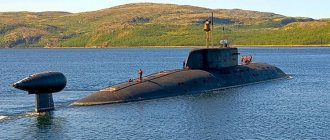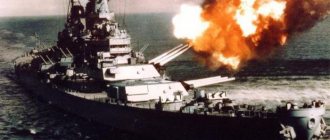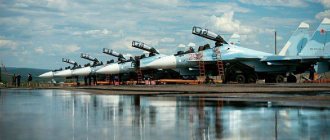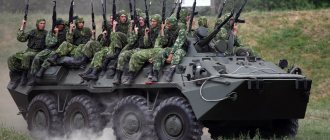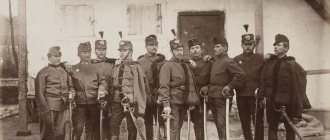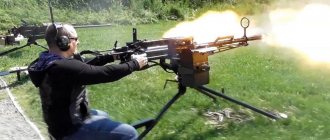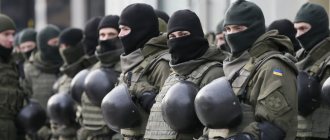Russian Air Force
The Air Force of any state is an indicator of the economic and scientific potential of the state. Today, the Russian Air Force is one of the best in the world, if not the best, in terms of technical equipment. This type of armed forces is the youngest, as it was created only at the beginning of the 20th century. But not a single land and sea operation can proceed without the participation of military aviation. After all, conducting reconnaissance, striking in tactical and strategic depth, and transferring manpower and equipment in the shortest possible time can only be carried out by the “wings of the army.”
Strengthening the aerospace forces
This year the Aerospace Forces will include 4 Tu-95MS missile carriers. As a result of modernization, the aircraft was equipped with suspensions for high-precision Kh-101 missiles, which were successfully used in Syria. The control system has also been reconstructed to improve maneuverability.
The most significant event of 2022 in Russian military aviation will most likely be the serial delivery of the 50th generation Su-57 fighter aircraft, the characteristics of which have not yet been advertised. In addition, the army will receive Mi-28MN attack helicopters and the first 2 Mi-38T transport and landing helicopters. In the future, a contract for the supply of heavy modernized Mi-26T2V helicopters is being considered.
By the end of 2022, military aviation will also receive 2 Il-22M11 control and relay aircraft, and in 2022 another 5 such aircraft will be put into service.
Il-22M11
Night Hunter
This all-weather attack helicopter Mi-28NM is already in production. The first deliveries are planned for 2022. The contract was concluded for the supply of 98 rotary-wing vehicles until 2027. The improved new generation helicopter “Night Hunter” is designed to destroy enemy armored vehicles and is equipped with a new type of anti-tank missiles “Chrysanthemum-M” and a modern airborne defense system.
The engine and on-board systems were modernized and a new all-round radar was installed. The main advantage of the helicopter was the ability to conduct targeted fire at targets at a distance of 10 km or more, and quickly receive information about the combat situation using the new radar.
Heavy attack drone
Anyone can see the “Hunter” and even touch it with their hands by visiting the exhibition at the Kubinka airfield from June 25 to 30 this year. In the Russian defense industry, the project is considered quite promising and there is a high probability that the manufacturers will conclude a contract with the Ministry of Defense for the supply of “Okhotnik” for the Aerospace Forces.
Story
In 1910, by order of Emperor Nicholas II, the Russian Empire purchased several aircraft from France to create its Air Fleet. After which, the training of officers who could fly airplanes immediately began in Sevastopol. Already by the beginning of the First World War, Russia had an air fleet of 263 aircraft, which was the first indicator among all countries participating in the global massacre. The planes were used exclusively to correct artillery fire. But soon air battles broke out in the blue heights, and the sky began to bring death in the form of bombs, which generously began to rain down on the heads of the soldiers in the trenches. Of the Russian pilots, the most famous is Pyotr Nesterov, who was the first to perform the famous “loop” in 1913 and the first to perform an aerial ram in 1914.
In 1917, the Imperial Air Fleet ceased to exist as a result of the Great October Revolution. Many pilots who had invaluable experience in air combat died or immigrated. In 1918, the Workers' and Peasants' Red Air Fleet was created in the young socialist state. The country's industry developed, and its scientific and technical potential grew. Therefore, it is not surprising that by 1917 the country, which had only 700 aircraft in its armed forces, which made it extremely vulnerable from the air, was already in the 1930s able to become a leader in the aircraft industry and create a powerful military aviation. The design bureaus of Tupolev and Polikarpov were able to organize mass production of TB-1, TB-3 bombers and I-15, I-16 fighters. In the USSR, pilot training began to be treated more competently, creating flying clubs and flight schools throughout the country, the graduates of which joined the ranks of the armed forces, Osoaviakhim, the Civil Air Fleet or were sent to the reserves.
Our pilots gained their first combat experience in Spain, where from 1936 to 1939 they fulfilled their international duty. During the Spanish Civil War, our pilots on domestic aircraft successfully operated against German aces flying the latest Messerschmitts. Later, successes in the sky during the war with Finland, whose air force was much weaker, turned the head of the Soviet command. But as the first years of armed confrontation with Nazi Germany showed, the USSR was significantly inferior in technical equipment, as well as in pilot training. But every day the experience of our pilots grew, and courage and heroism have always distinguished our pilots. Ultimately, this made it possible to gain an advantage over the enemy in the air.
After World War II, relations with former allies in the anti-Hitler coalition began to rapidly heat up. The United States and its allies began to develop plans directed against the country of the Soviets. The response was to build up the military potential of the USSR, including the modernization of the Air Force. During modernization, huge amounts of money from the country's budget were spent on the development of modern aircraft, which were supposed to create an advantage in the air over enemy aircraft, as well as ensure the implementation of tasks to deliver an adequate strike on important economic and military targets of the enemy, his troop groups. It is also worth noting that no less attention was paid to the training of flight personnel, air combat tactics were constantly improved, and the possibility of conducting maneuvers was studied, using all the capabilities of modern aircraft.
After the USSR ceased to exist, 40% of the entire fleet of equipment went to the Russian Federation. 65% of the personnel remained to serve in Russian Air Force units. From the early 1990s to the early 2000s, the “wings of the army” were in a deplorable state, when, due to poor funding, virtually no fleet renewal was carried out, and flying hours were extremely poor. After the change of leadership of the country, positive changes began. And since 2008, a large-scale reorganization of the air force began, which includes a change in the structure of this type of troops, and the reconstruction and replacement of old equipment.
Air Force Day, August 12, is a day of remembrance. On this day, Nicholas II, as history says, signed a decree on the creation of the first aviation unit. Festive events, in accordance with the Decree of the President of the Russian Federation, are set to be held on the third Sunday of August, on Russian Air Fleet Day.
* The Emperor's decree of August 12, 1912 on the creation of an aviation unit was not found in the archives. There is an order from the Minister of War of the Russian Empire, dated the same date, about the transfer of all issues of aviation and aeronautics to the aeronautical unit of the Main Directorate of the General Staff.
Contract for import substitution in the design of the MC-21 aircraft
As follows from the information on the website of the Unified Information System in the field of procurement, on April 28, 2022, the Ministry of Industry and Trade of the Russian Federation concluded a contract with Irkut Corporation JSC as the only contractor for R&D on the topic “Performing research and development work in within the framework of the project to replace imported materials and products in the design of the short-medium-haul aircraft MS-21 with domestic analogues”, code “MS-21 Import substitution 2022 – 2021”. The contract value is 12.0763 billion rubles, the execution date is December 31, 2022.
Air Force structure
The Air Force reforms in 2008 introduced a new structure for the Air Force.
Today the Russian Air Force includes:
- Air Force High Command,
- Aviation,
- Anti-aircraft missile forces,
- Radio technical troops,
- Special troops.
Aviation is divided into army, operational-tactical, long-range and military transport in accordance with the tasks performed.
Special troops must carry out tasks to support the activities of the Air Force.
Radio technical troops are a branch of the Air Force that is responsible for conducting reconnaissance and transmitting information in order to carry out the tasks facing the Air Force.
Anti-aircraft missile forces perform the tasks of providing air defense and protecting important government and military facilities from air strikes.
Ground troops
About 30 modernized T-72B3 tanks will be received by the Russian Army ground forces in 2022. In particular, this batch will be transferred to a motorized rifle brigade in the Orenburg region. It is also planned to supply 132 T-14 Armata tanks and T-15 infantry fighting vehicles. It is likely to be put into service as early as 2022.
During the exercises in the Chelyabinsk region, tank crews will test the Terminator tank support combat vehicles (BMPT) for the first time. The radiation, chemical and biological defense troops will be armed with TOS-1A Buratino heavy flamethrower systems. It should be noted that in 2022, more than two thousand shells will be supplied for these complexes.
The mortarmen will receive the latest artillery and mortar systems “Nabrosok”. The development of the complexes is already being completed and, according to some military experts, they will go into production this year. Self-propelled guns "Phlox", "Drok" and "Magnolia" may also be produced.
This year, the world's most powerful self-propelled guns, the 2S7M Pion, will be modernized. They will receive updated gearboxes, distribution mechanisms and power supply units. The overhaul will also affect intercom equipment, a radio station, the instrumentation system of the anti-nuclear defense system and surveillance devices.
By the end of the year, acceptance tests of the modernized Pantsir-S1M anti-aircraft missile and gun system will be completed.
Service Features
The functioning of the Air Force is not only about piloting the celestial machines; they are controlled by a small group of people who have undergone professional training. Some of these functions are assigned to conscript soldiers. Their responsibilities include:
- ensuring logistical and technical actions that are characterized by the absence of difficulties;
- security of objects;
- engineering support;
- search and rescue activities.
Duty stations include: an air base and an area for the deployment of aviation equipment, radio technical or special forces that are part of the air force.
Small arms and equipment from the Kalashnikov concern
The Kalashnikov concern presented a new development strategy for 2020. Now the concern's developers are working on more than 30 projects, which include not only weapons, but also equipment, as well as light transport equipment. Among the finished projects that have been tested are the RPK-16 machine gun and the Boa constrictor pistol. A modern Kalashnikov light machine gun can fire ammunition from a standard AK magazine, as well as from a specially designed drum with expanded ammunition. The machine gun weighs only 4.5 kg, and the rate of fire is 700 rounds per minute.
The 9 mm caliber Boa constrictor self-loading pistol has become a real contender for replacing the “immortal” PM. The pistol has a clip of 18 rounds, which is 10 more than the Makarov pistol. A special subsonic cartridge has also been developed for the new pistol, allowing it to fire almost silently with high penetration power.
Based on the results of state tests, the Boa constrictor showed excellent tactical characteristics, reliability and stable operation at temperatures from -70 to +50 °C.
- Draft age in Russia in 2022
- How many serve in the army in 2019-2020
- Rearmament of Russia by 2022

